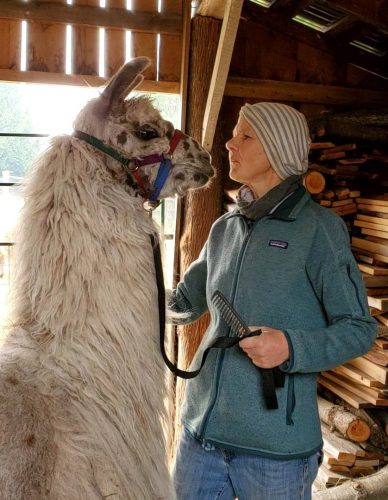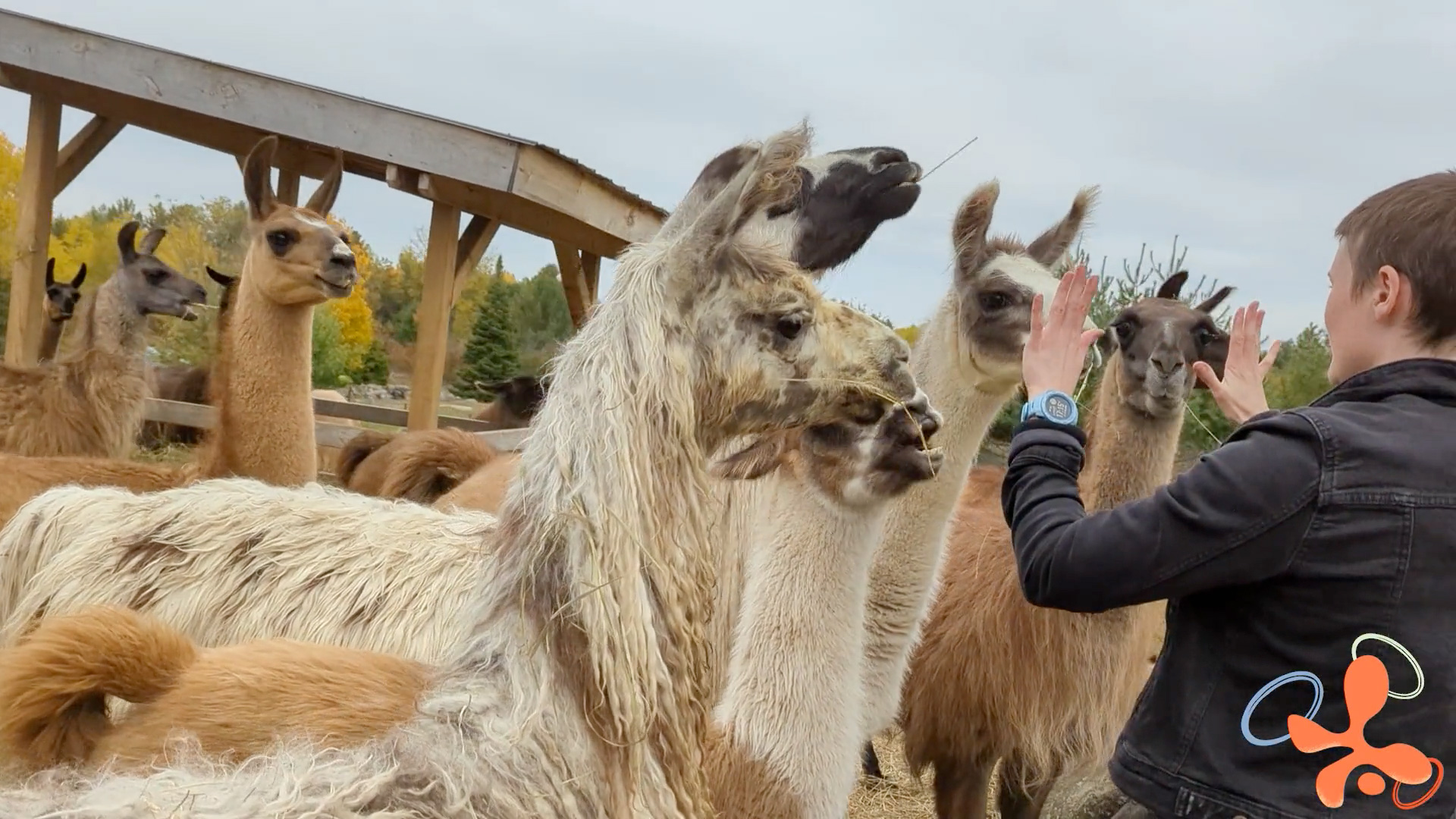For the Circosonic research project with Cirkus Syd, Morgan Anderson partnered with Jacky Sawatzky to ask how llamas might listen to juggling. Morgan and Jacky are both PhD candidates in Theatre and Performance Studies at York University in Toronto, ON. Morgan's research focuses on the relationship between hobbyist jugglers and their props. Jacky's research observes llama behaviour to ask, "How are we to listen to you, llama?" For her research, Jacky commissioned an electroacoustic musical composition made from recordings of llama vocalizations. She then played back that music for the llamas themselves to see how they would react. In this project, Morgan instead juggles for llamas while Jacky observes their behaviours. The first video in this research documentation series introduces Jacky, the llamas, and their current habitat. The second and final video in a series investigating how llamas might listen to a juggling performance takes the viewer along to the Serendipity Farm and Sanctuary where Morgan juggled for the llamas. Jacky reflects on llama behaviour, and Morgan reflects on her experience while juggling.







